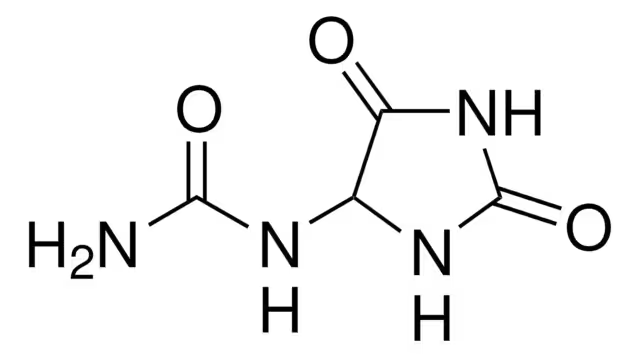Antimony Oxychloride
₹ 1,150.00 – ₹ 3,890.00Price range: ₹ 1,150.00 through ₹ 3,890.00
Product Specifications
CAS NO. 7791-08-4
HSN CODE : 28272000
- Molecular Formula: SbOCl
- Molecular Weight: 173.22 g/mol
- CAS Number: 7791-08-4
- Appearance: White to pale yellow crystalline powder
- Melting Point: Decomposes at approximately 380°C
- Solubility: Insoluble in water but soluble in hydrochloric acid and tartaric acid solutions.
- Stability: Stable under dry conditions but may hydrolyze in the presence of moisture to form antimony oxyhydroxides.
HealthChemix Support
GST Invoice Available
Secure Payments
365 Days Help Desk
Return & Warranty Policy
Product Details
Antimony Oxychloride (SbOCl) / CAS NO. 7791-08-4
Antimony oxychloride, with the chemical formula SbOCl, is an inorganic compound that has applications in multiple industries, particularly in pigments and catalysts. It is a white, crystalline solid that is moderately stable under ambient conditions. The compound is of significant interest for its chemical properties and industrial uses, although it must be handled with care due to its toxic nature.
Physical and Chemical Properties
- Molecular Formula: SbOCl
- Molecular Weight: 173.22 g/mol
- CAS Number: 7791-08-4
- Appearance: White to pale yellow crystalline powder
- Melting Point: Decomposes at approximately 380°C
- Solubility: Insoluble in water but soluble in hydrochloric acid and tartaric acid solutions.
- Stability: Stable under dry conditions but may hydrolyze in the presence of moisture to form antimony oxyhydroxides.
Applications of Antimony Oxychloride
1. Pigments
Antimony oxychloride is primarily used in the production of pigments, especially in the cosmetics industry. It is valued for its ability to provide a pearlescent or lustrous finish, making it a popular component in products like:
- Nail polishes
- Eye shadows
- Lipsticks
2. Catalyst in Chemical Reactions
SbOCl is used as a catalyst in certain organic and inorganic chemical reactions. Its catalytic properties are particularly useful in the polymer industry for processes like:
- Polymerization of olefins
- Synthesis of polyester resins
3. Flame Retardants
In combination with other antimony compounds, antimony oxychloride is employed in the production of flame retardants. These retardants are used in plastics, textiles, and coatings to reduce flammability.
4. Glass and Ceramics
SbOCl is used in the glass and ceramics industries to improve the clarity and durability of the products. It enhances the optical properties of specialty glasses and is sometimes used as a fining agent.
5. Research and Laboratory Applications
Antimony oxychloride is used in research settings for studying its properties and as a reagent in chemical synthesis, particularly in the preparation of other antimony-based compounds.
Toxicity and Hazards of Antimony Oxychloride
While antimony oxychloride has diverse applications, it is important to recognize its potential hazards. Proper handling and storage are crucial to avoid adverse effects on human health and the environment.
Health Hazards
- Toxicity:
Antimony oxychloride is classified as toxic and can pose significant health risks upon inhalation, ingestion, or skin contact. Exposure can lead to:- Respiratory irritation
- Skin and eye irritation
- Gastrointestinal distress, including nausea and vomiting
- Chronic Exposure:
Prolonged exposure to antimony compounds may result in antimony poisoning, characterized by symptoms such as:- Fatigue
- Chronic respiratory issues
- Liver and kidney damage
- Carcinogenic Potential:
While not definitively classified as a carcinogen, some antimony compounds have been associated with potential carcinogenic effects in certain studies.
Environmental Hazards
Antimony oxychloride is harmful to the environment, particularly aquatic life. Its improper disposal can lead to contamination of soil and water sources.
Safety Measures for Handling Antimony Oxychloride
1. Personal Protective Equipment (PPE)
When handling SbOCl, use:
- Gloves resistant to chemicals
- Safety goggles or a face shield
- Lab coat or protective clothing
- A mask or respirator to prevent inhalation of dust or fumes
2. Engineering Controls
- Ensure adequate ventilation in the workspace.
- Use fume hoods or extraction systems during operations involving SbOCl.
3. Safe Storage
- Store in a tightly sealed container in a cool, dry place.
- Avoid exposure to moisture, as it can hydrolyze and release toxic gases.
- Keep away from acids and bases that may react with the compound.
4. First Aid Measures
- Inhalation: Move the affected individual to fresh air immediately. Seek medical attention if symptoms persist.
- Skin Contact: Wash thoroughly with soap and water. Remove contaminated clothing.
- Eye Contact: Rinse eyes cautiously with water for several minutes. Seek medical assistance if irritation continues.
- Ingestion: Do not induce vomiting. Rinse mouth and seek medical attention immediately.
Disposal Guidelines
Antimony oxychloride must be disposed of in accordance with local and federal regulations. Avoid discharging it into the environment. Use a licensed waste disposal company for proper handling.
Conclusion
Antimony oxychloride (CAS NO. 7791-08-4) is a versatile compound with applications in pigments, catalysis, and flame retardants. However, its toxic and hazardous nature requires careful handling, storage, and disposal. By adhering to safety measures and regulatory guidelines, this compound can be used effectively while minimizing risks to health and the environment.
Other Product
Related products
-
Aluminium Chloride Hydrated
₹ 615.00 – ₹ 5,780.00Price range: ₹ 615.00 through ₹ 5,780.00 This product has multiple variants. The options may be chosen on the product page -
Allantoin Powder
₹ 470.00 – ₹ 15,710.00Price range: ₹ 470.00 through ₹ 15,710.00 This product has multiple variants. The options may be chosen on the product page



